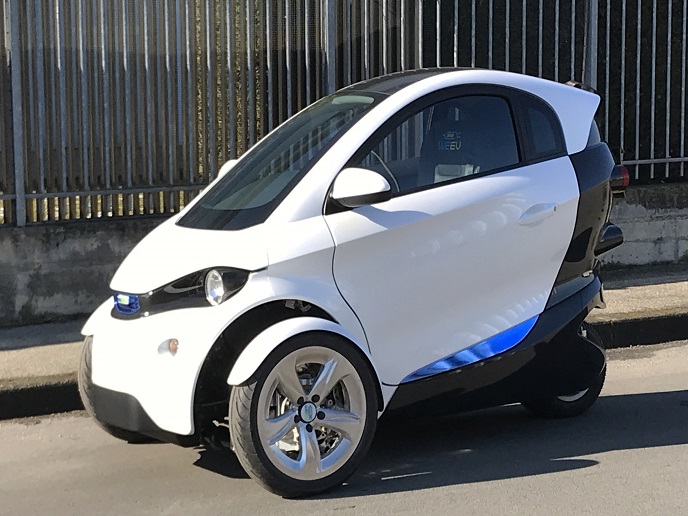Three-wheeler for greener travel
Engineers from Spain, Italy, Turkey and Poland have dreamt up and designed a new 3-wheeler electric car, offering the compactness of a motorbike with some of the comfort and safety of traditional cars. EU-project WEEVIL successfully tested the prototype that has one back wheel and two front wheels on an adjustable axle to make manoeuvring and parking in crowded cities easier. “WEEVIL is cleaner than traditional cars because it’s electric and compared to other electric cars it weighs less than half, resulting in lower electricity consumption and less CO2 generation,” says Imanol Egaña, project coordinator and researcher at Spanish technology centre IK4-TEKNIKER(opens in new window). The covered cab has a slim-line, sporty-looking appearance, designed by the Italian University for Design(opens in new window) (IAAD), and is big enough for one passenger, who sits behind the driver like on a motorbike. But unlike a motorbike, there are backrests and the car doesn’t tilt when it goes round bends and corners.
New ground
The engineers have broken new ground in some of the components they have developed. “The subsystems that provide some of the advantages are interesting in their own right and could be applied individually to other vehicles,” says Egaña. The car’s front-axle Pincer system(opens in new window), developed by Spain’s MONDRAGON Automoción and IK4-TEKNIKER, allows for the axle width to decrease if the driver needs to park or reduce speed. This happens through a mechanism driven by an electrical motor, commanded by the car’s electronics. Italian vehicle manufacturer CECOMP(opens in new window), which assembled and electrified the car, also implemented a joystick to make parking easier. WEEVIL used a composite material called Glass Fibre Reinforced Polymer to reduce the chassis’ weight by 70 % as a result of the design by Turkey’s HEXAGON(opens in new window). “It can dissipate five times more impact energy than metals, contributing to road safety and the energy efficiency of the vehicle,” says Iván Saénz, an engineer at Spanish chemicals group IRURENA(opens in new window). It developed a new method to manufacture the material, which reduces costs and enables smaller lot sizes. The battery management system(opens in new window), developed by Kaitek, also uses better balancing of the battery cells and temperature control to reduce degradation and increase efficiency. “The electric motor, designed by IK4-TEKNIKER and Fagor Automation, doesn’t use magnets and has a new geometry that is capable of a higher average performance over the entire speed range,” says Egaña. The car has impressed drivers and passengers in testing, although the passenger space is not fully comfortable for people over 1.75 m., something the team will be working on. The prototype has passed many of the real validation and homologation tests and partial crash tests, conducted by Poland’s PIMOT. Having drafted a commercialisation plan during the project, the partners are optimistic about it reaching the market. “One of the decisions we took was to select and use existing off-the-shelf components for those vehicle parts that are not innovative in the project,” says Masato Inoue, professor at IAAD. “This brings the vehicle concept closer to the markets because those components already fulfil European homologation criteria and are attainable from the current supply chain.” “There is real interest in its commercialisation,” adds Egaña.







